New Products
-
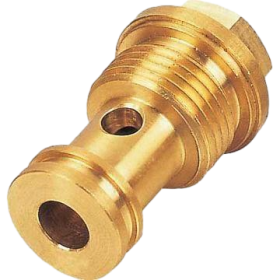
Custom Turn-Mill Combination brass parts
-
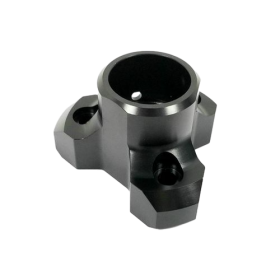
Custom Turn-Mill Combination parts
-
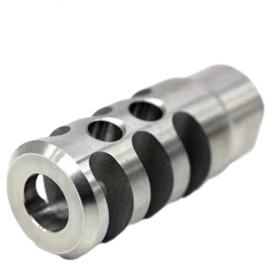
Precision CNC Turning Parts Stainless Steel shaft accessories
-
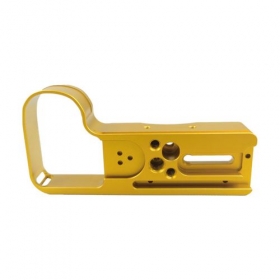
Precision CNC Custom Made Colorful Anodized Aluminum milling parts
-
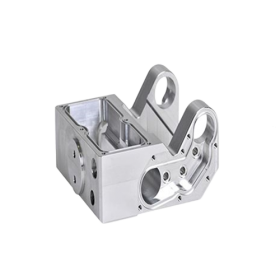
Custom CNC Milling Automated Machinery and Equipment Parts
-
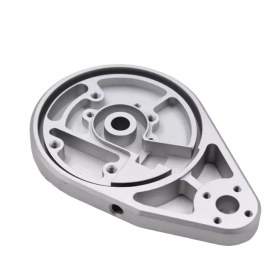
OEM/ODM Custom High Precision Metal CNC Machining/Milling/Turning Service CNC Turning Part
A Comprehensive Guide to Low-Volume CNC Machining
In the dynamic realm of manufacturing, low-volume CNC machining has emerged as a crucial process, catering to the unique demands of prototyping, custom part production, and small-batch runs.
Bomei offers the highest quality small batch CNC machining services for a variety of applications in different industries.
This article delves deep into the multifaceted aspects of low-volume CNC machining, providing invaluable insights for engineers, designers, and manufacturers alike.
Understanding Low-Volume CNC Machining
Low-volume CNC machining pertains to the production of a limited quantity of parts, typically spanning from 1 piece up to 100 pcs. It harnesses the power of Computer Numerical Control (CNC) machines to fabricate highly precise components. This approach is the go-to choice for industries such as automotive, aerospace, electronics, and medical, especially during the prototyping phase or when fulfilling niche market demands.
Advantages
1.Precision and Tolerance: Achieving tolerances as tight as ±0.005mm, it is a boon for industries where microscopic accuracy is non-negotiable, like aerospace and medical.
2.Material Flexibility: Compatible with an extensive array of materials, including aluminum, stainless steel, titanium, ABS, and PEEK. This versatility empowers manufacturers to cherry-pick materials based on specific performance prerequisites.
3.Rapid Turnaround: Thanks to digital design files, the transition from CAD models to finished parts is seamless, slashing lead times significantly.
4.Cost-Effectiveness: Boasting lower setup and tooling costs compared to traditional methods, it is tailor-made for prototyping and small-batch production, minimizing financial risks.
Optimizing Your CNC Machine Setup for Low Volume Manufacturing
1. Tooling and Fixturing
1. Employ quick-change tooling systems to curtail downtime during tool swaps. Modular fixtures can expedite reconfiguration for different batches, enhancing overall productivity.
2. CAM Programming
1. Prioritize efficient tool paths in your CAM software. Simulation tools can pre-empt and rectify potential issues, ensuring smooth production and a superior surface finish.
3. Material Management
1. Organize a well-structured material inventory system for swift access to required materials. Pre-cutting and preparing raw materials can shave off setup times substantially.
4. Machine Parameter Adjustment
1. Tailor spindle speeds and feed rates to the specific material and design, optimizing both precision and efficiency. Regular machine calibration is the key to sustained accuracy.
5. Prototyping and Software Utilization
1. Leverage rapid prototyping strategies to validate designs and setups, nipping potential problems in the bud. Invest in advanced CNC software and automation solutions for adaptive control and real-time monitoring.
Essential Tools for Low-Volume CNC Machining
1. End Mills: These versatile cutting tools, available in diverse shapes and sizes, are the workhorses for intricate cutting, slotting, and contouring tasks across different materials.
2. Indexable Cutting Tools: With replaceable cutting edges, they offer a cost-effective and efficient machining solution, reducing tool replacement costs.
3. Vices and Clamps: Reliable workholding is the cornerstone of accurate machining. These tools ensure stability and safety throughout the process.
4. Coolant Systems: Crucial for dissipating heat generated during machining, they safeguard the tool and workpiece from thermal damage and aid in chip removal.
5. Probe Systems: High-precision probe systems are indispensable for accurate setup and measurement, guaranteeing adherence to design specifications.
Reducing Machining Time and Costs
1. Tool Path Optimization
1. Trochoidal Milling: This circular path motion mitigates heat buildup and prolongs tool life, especially in hard materials. Parameters like feed rate adjustments and higher RPMs need to be fine-tuned.
2. Adaptive Clearing: Maintains a consistent tool engagement angle, permitting higher feed rates and deeper cuts. Optimal engagement angle, feed rate, and spindle speed settings are pivotal.
2. High-Speed Machining (HSM)
1. Implementing HSM with spindle speeds ranging from 10,000 to 60,000 RPM and elevated feed rates (depending on material and tool) can dramatically cut cycle times while enhancing surface finish and tool longevity.
3. Efficient Tool Management
1. Select specialized tools for specific tasks and implement tool life monitoring systems. By setting wear limit thresholds and tracking tool usage, unexpected tool failures can be averted.
Design Tips for Low-Volume CNC Machining
1. Material Selection
1. Evaluate materials based on machinability, cost, and application-specific properties. Aluminum, brass, and certain plastics are favored for their ease of machining and cost-effectiveness.
2. Tolerances and Surface Finish
1. Design with practical tolerances to balance manufacturability and cost. Reserve tight tolerances for critical areas and specify surface finishes aligned with part functionality.
3. Simplified Geometry
1. Streamline part geometry to reduce machining complexity, minimizing cycle times and tool changes. Avoid superfluous features that can impede efficiency.
4. Tool Access and Fixturing
1. Ensure ample tool access to all machined features and incorporate reliable fixturing elements to cut setup time and enhance precision.
5. Prototyping and Iteration
1. Prototyping is a non-negotiable step. Test initial designs, iterate based on feedback, and guarantee the final part meets all functional requirements without overcomplicating machining.
Material Selection for Low-Volume Production
1. Aluminum 6061
1. Machinability: Exceptional, with wide availability.
2. Cost: Moderate, offering a cost-effective solution for small runs.
3. Performance Characteristics: Boasts a high strength-to-weight ratio, good corrosion resistance, and thermal conductivity.
4. Technical Parameters: Tensile Strength: 310 MPa, Yield Strength: 276 MPa, Hardness: 95 Brinell.
2. Stainless Steel 304
1. Machinability: Good, albeit more challenging than aluminum.
2. Cost: Higher, but provides superior mechanical properties and durability.
3. Performance Characteristics: Exhibits excellent corrosion resistance, good mechanical properties, and the ability to withstand high temperatures.
4. Technical Parameters: Tensile Strength: 505 MPa, Yield Strength: 215 MPa, Hardness: 70-90 Rockwell B.
3. ABS Plastic
1. Machinability: Superb, yielding a smooth surface finish.
2. Cost: Low to moderate, highly economical for prototyping and low-volume production.
3. Performance Characteristics: Strong, impact-resistant, and dimensionally stable.
4. Technical Parameters: Tensile Strength: 40 MPa, Flexural Modulus: 2.3 GPa, Hardness: 110 Rockwell R.
Types of Low-volume CNC Machining
A number of CNC machining processes are compatible with small batch production. The various types of Low-volume CNC machining processes are listed and described below:
CNC Turning
CNC Milling
CNC Drilling
3D Printing Service
Wire EDM Machining
Sheet Metal Fabrication
3-Axis CNC Machining
4-Axis CNC Machining
5-Axis CNC Machining
In conclusion, mastering the art of low-volume CNC machining demands a holistic approach, spanning design optimization, machine setup finesse, tool selection acumen, and astute partner selection. By adhering to these best practices, manufacturers can unlock the full potential of low-volume CNC machining, delivering high-quality parts with efficiency and cost-effectiveness.

 Evan Xiao
Evan Xiao